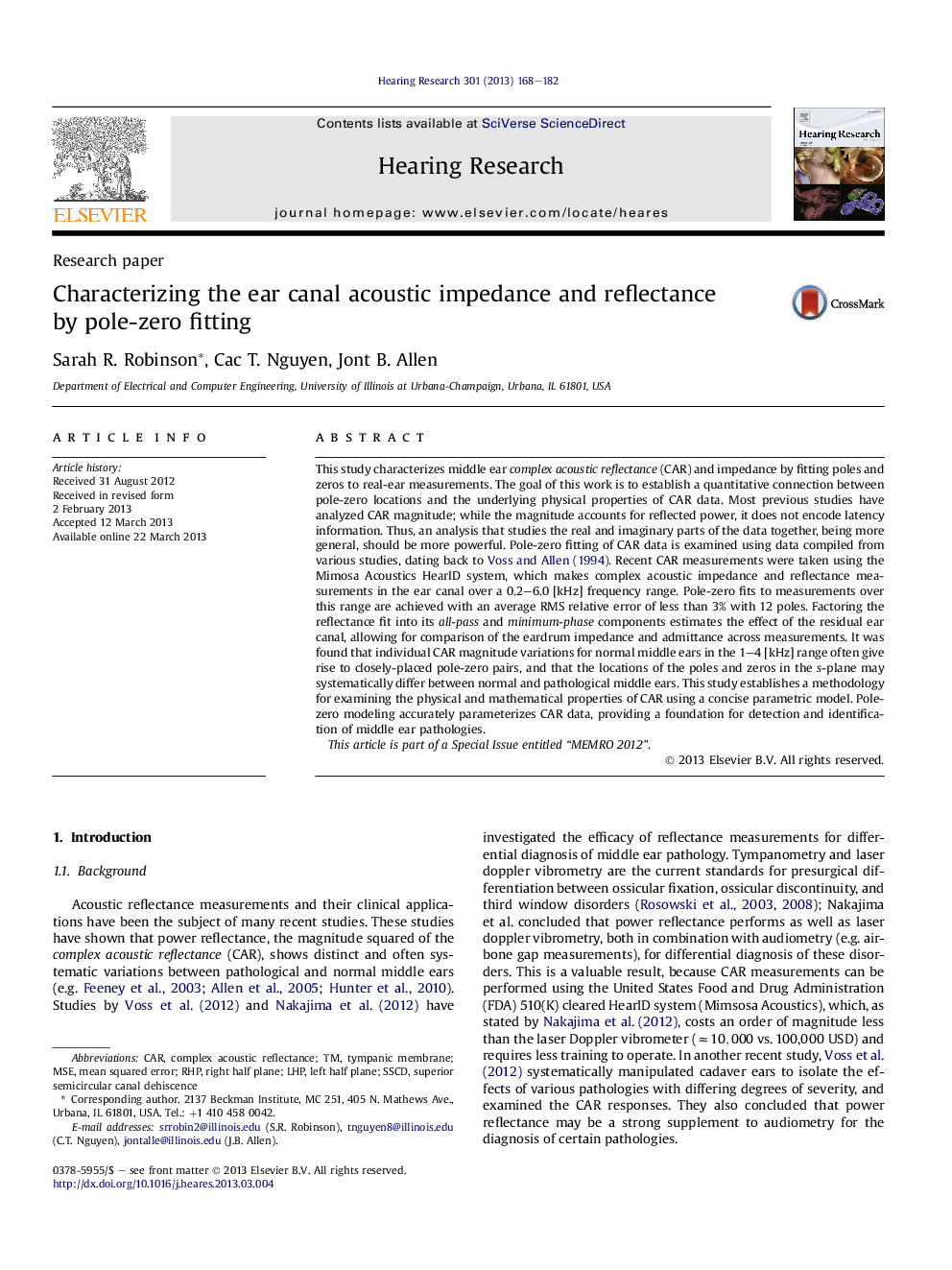| کد مقاله | کد نشریه | سال انتشار | مقاله انگلیسی | نسخه تمام متن |
|---|---|---|---|---|
| 4355218 | 1615599 | 2013 | 15 صفحه PDF | دانلود رایگان |

• We characterize complex acoustic reflectance measurements using pole-zero fits.
• Pole-zero fits are accomplished with low error and a small number of parameters.
• The all-pass component of the reflectance fit approximates the ear canal.
• Individual variation for normal ears is isolated to a region of the pole–zero plot.
• Pole-zero locations may systematically differ for various pathologies.
This study characterizes middle ear complex acoustic reflectance (CAR) and impedance by fitting poles and zeros to real-ear measurements. The goal of this work is to establish a quantitative connection between pole-zero locations and the underlying physical properties of CAR data. Most previous studies have analyzed CAR magnitude; while the magnitude accounts for reflected power, it does not encode latency information. Thus, an analysis that studies the real and imaginary parts of the data together, being more general, should be more powerful. Pole-zero fitting of CAR data is examined using data compiled from various studies, dating back to Voss and Allen (1994). Recent CAR measurements were taken using the Mimosa Acoustics HearID system, which makes complex acoustic impedance and reflectance measurements in the ear canal over a 0.2–6.0 [kHz] frequency range. Pole-zero fits to measurements over this range are achieved with an average RMS relative error of less than 3% with 12 poles. Factoring the reflectance fit into its all-pass and minimum-phase components estimates the effect of the residual ear canal, allowing for comparison of the eardrum impedance and admittance across measurements. It was found that individual CAR magnitude variations for normal middle ears in the 1–4 [kHz] range often give rise to closely-placed pole-zero pairs, and that the locations of the poles and zeros in the s-plane may systematically differ between normal and pathological middle ears. This study establishes a methodology for examining the physical and mathematical properties of CAR using a concise parametric model. Pole-zero modeling accurately parameterizes CAR data, providing a foundation for detection and identification of middle ear pathologies.This article is part of a Special Issue entitled “MEMRO 2012”.
Journal: Hearing Research - Volume 301, July 2013, Pages 168–182